Super User
Nervous About Nerve Issues? Your Podiatrist Can Help!
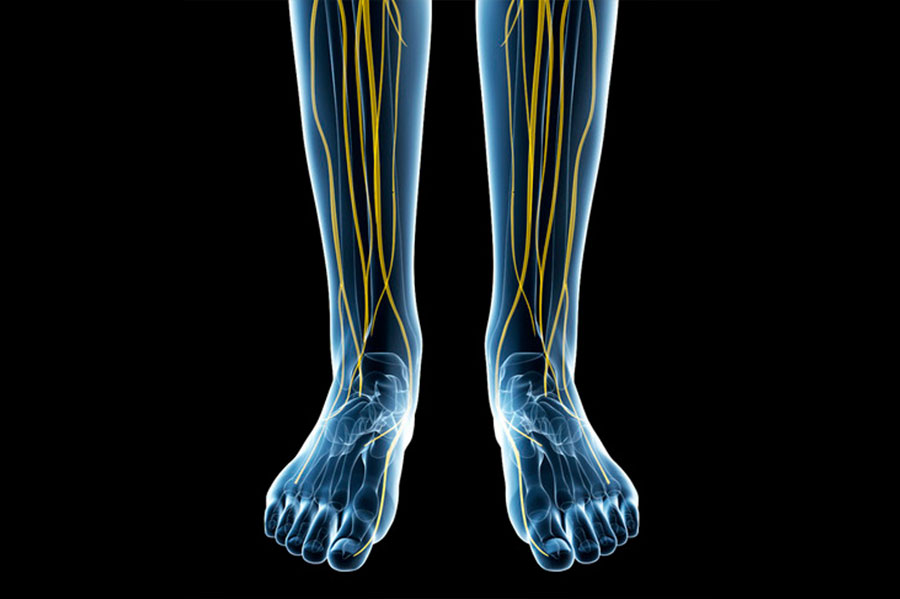
Sole Focus Foot and Ankle deal with all kinds of health complications, but some are poorly understood despite their prevalence, particularly nerve disorders. The intricate network in your feet and ankles plays a major role in movement and sensation, and when these nerves become compressed or irritated, it can lead to a variety of uncomfortable conditions.
For this blog, we’ll be exploring three of the most troublesome ones.
1.) Morton’s Neuroma:
- Who it Affects: Athletes, people who wear high heels frequently, and those with certain foot types (flat feet, bunions).
- The Culprit: This condition arises when the tissue surrounding a nerve between the toes thickens, often due to repetitive pressure.
- Conservative Treatments: Wider shoes with arch support relieve pressure on the nerve. Padding or orthotics that realign the foot can also help.
- Intensive Options: Corticosteroid injections can reduce inflammation. In severe cases, surgery might be necessary to remove a portion of the thickened tissue or nerve.
2.) Tarsal Tunnel Syndrome:
- Who it Affects: People with flat feet, diabetics, and those who participate in activities that put repetitive stress on the ankle (dancers, runners).
- The Cause: Compression of the tibial nerve within the tarsal tunnel, located on the inner ankle, leads to Tarsal Tunnel Syndrome.
- Conservative Treatments: Reducing activities that aggravate is key. Physical therapy exercises to strengthen the muscles and improve flexibility can also be beneficial.
- Intensive Options: Transcutaneous Electrical Nerve Stimulation, or TENS, is a promising option for pain relief.
3.) Drop Foot:
- Who it Affects: Drop foot can be caused by various conditions, including nerve damage from diabetes, stroke, or injuries to the lower back or leg.
- The Reason Behind It: Damage to the peroneal nerve, responsible for lifting the front part of the foot, leads to difficulty dorsiflexion (lifting the toes towards the shin).
- Conservative Treatments: Ankle-foot orthosis (AFO), a supportive brace that holds the foot in a dorsiflexed position, can be helpful. Physical therapy to improve muscle strength and coordination can also work to treat the root cause.
We hope this blog brought you one step closer to cleaner, fitter feet! If you still have questions or are seeking treatment for a health-related concern, schedule an appointment today. The team at Sole Focus Foot and Ankle in Marlton, NJ, would be pleased to assist you.
7 Soothing Strategies: A Podiatrist’s Guide to Holistic Relief
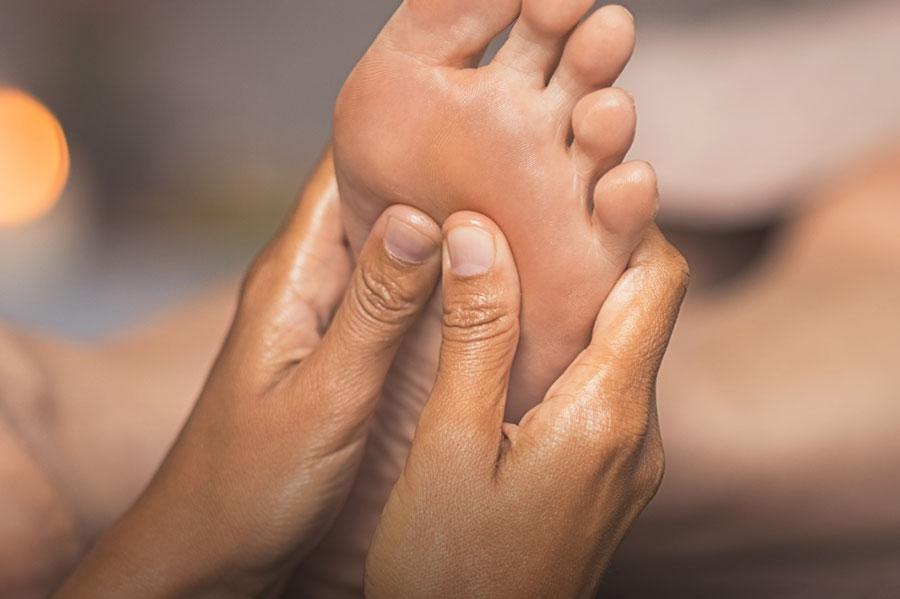
Foot and ankle pain problems are always just around the bend, and when they do present, they tend to impact our daily activities in more ways than one. While medications and high tech treatments can offer relief, many people seek a more natural approach.
Sole Focus Foot and Ankle is all in favor of trying conservative and non-invasive methods first, so for this blog, we’ll explore seven effective, medication-free strategies for managing foot and ankle pain.
1. Rest and Activity Modification:
- Listen to Your Body: Pain is your body’s way of signaling something’s wrong. If you’re exercising, for example, you shouldn’t “walk it off” or “push through” when pain strikes.
- Low-Impact Exercise: Gentle exercises like swimming or yoga help maintain mobility without putting excessive stress on your feet and ankles.
2. Ice and Heat Therapy:
- Ice for Acute Pain: Apply ice packs wrapped in a towel for 15-20 minutes at a time to reduce inflammation and swelling, especially after injuries.
- Heat for Chronic Pain: Use a heating pad or warm compress for 20-30 minutes to loosen tight muscles and improve circulation, aiding in pain relief for chronic conditions.
3. Supportive Footwear:
- Avoid Uncomfortable Shoes: High heels, tight shoes, and worn-out footwear can exacerbate foot pain. Invest in supportive shoes with good arch support and adequate cushioning instead.
- Orthotics for Targeted Support: Custom orthotics, designed by a podiatrist who knows your foot structure, can address biomechanical imbalances that contribute to pain.
4. Stretching and Strengthening Exercises:
- Improve Flexibility: Regularly stretching your feet and ankles can increase flexibility and reduce stiffness.
- Strengthen the Foundation: Targeted strengthening exercises for your foot and ankle muscles enhance stability and support.
5. Salt Soaks and Muscle Massage:
- Relaxation and Relief: Soaking your feet in warm water with Epsom salts is a natural way to soothe tired muscles, reduce inflammation, and promote relaxation.
6. Massage Therapy:
- Promote Circulation and Relaxation: A professional massage can improve circulation in your feet, relieve muscle tension, and reduce pain.
We hope this blog brought you one step closer to cleaner, fitter feet! If you still have questions or you’re seeking treatment for a health-related concern, schedule an appointment today. The team at Sole Focus Foot and Ankle in Marlton, NJ, would be pleased to assist you.
Seniors: You Can Still Have Active, Happy Feet with Arthritis!
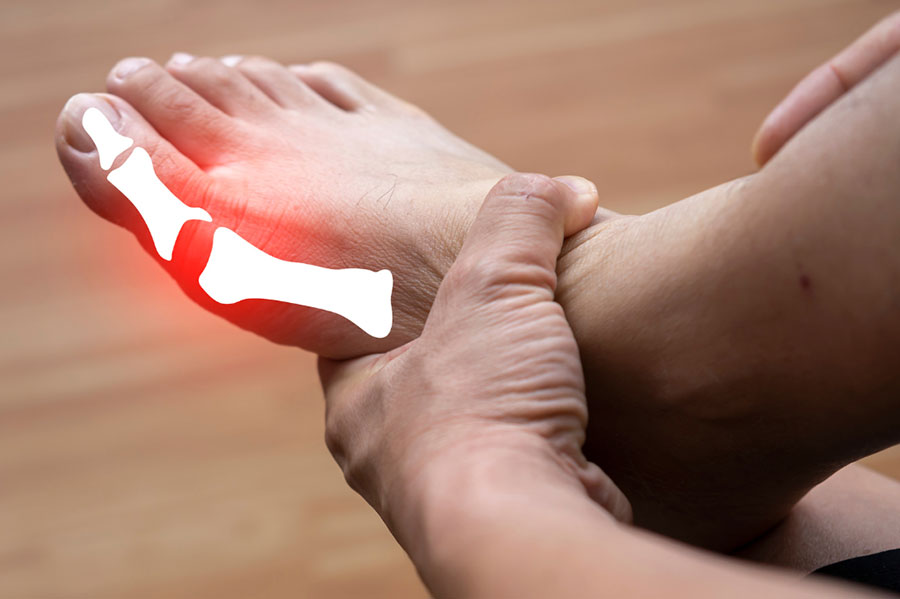
Arthritis isn’t just one condition; rather, it’s a blanket term covering more than 100 disorders that afflict the joints. Unfortunately, any one of those disorders can take a toll on your ability to stay active, especially when it strikes at the connections between your feet and ankles.
Seniors, in particular, tend to value their independence and mobility, but arthritis gets in the way of both. With that in mind, here are some essential tips to ensure senior feet stay happy and healthy, courtesy of the team at Sole Focus Foot and Ankle.
1. Supportive Footwear:
- Fit is Key: Prioritize ample space for your toes and proper arch support. Avoid tight or pointed footwear that can pinch nerves, worsening pain.
- Cushioning Counts: Select shoes with shock-absorbing soles to minimize impact on your joints. Look for materials like gel or air cushioning.
- Consider Custom Orthotics: For specific foot concerns, consult a podiatrist about custom orthotics for personalized support and pain relief.
2. Gentle Exercise and Movement:
- Warm Up and Cool Down: Before any activity, spend five minutes on gentle stretches to warm up your joints and muscles. Cool down with light stretches afterward.
- Low-Impact Options: Walking, swimming, water aerobics, or chair exercises help with weight management and reduce pressure on the joints as a result.
- Listen to Your Body: Don’t push through pain. Rest when needed, adjust the intensity or duration of activities based on comfort level and consider joint assistive devices like braces when hurting.
3. Professional Foot Care:
- Podiatrist Visits: Schedule regular appointments with a podiatrist for foot exams and common-sense medical advice.
- Physical Therapy: Targeted exercises can improve flexibility, strength, and balance, all of which contribute to foot health and pain management.
- Guided Injections: The use of ultrasound guidance is helping podiatrists deliver injections of corticosteroids or pain-relieving drugs accurately, simply, and safely to the joint in need.
Arthritis doesn’t have to stop you from being active, healthy, or happy. With the right tools and the right DPM, any senior can keep on doing the things they love while managing pain and discomfort.
Aching from arthritis? Schedule an appointment today! Sole Focus Foot and Ankle in Marlton, NJ, would be delighted to get you moving smoothly again, whatever your age might be.
Nail Care is Self-Care: Beyond Polish and Pampering
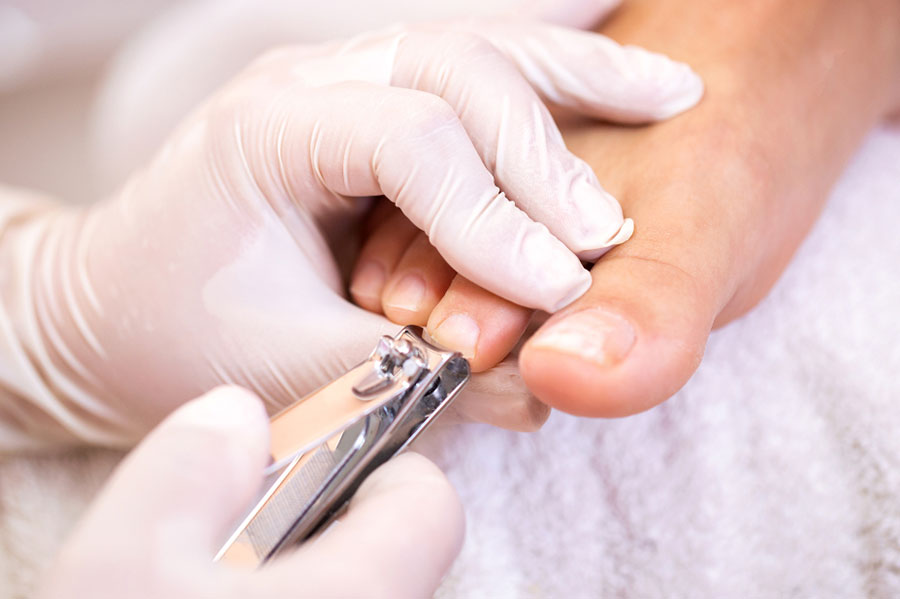
Aesthetics and health go hand in hand more often than you might think. And when it comes to podiatry, a clear-cut example of that close relationship is nail care. Tending to your toenails isn’t just a soothing beauty ritual; rather, it’s an investment in your overall well-being.
Whether you’re seeking a top-tier pedicure or wondering what at-home treatments might work for you, Sole Focus Foot and Ankle is happy to keep you informed on the options. This blog post will take you through the best benefits that proper nail care can provide, from sanitary pedicures to simple self-care strategies.
Preventative Power
- Regular cleaning, trimming, and moisturizing of your toenails can significantly lessen the risk of fungal infections, a widespread concern affecting nearly 1 in 10 adults globally.
- Studies published in the Journal of the American Podiatric Medical Association highlight the efficacy of proper nail hygiene in curbing the discolored, thickened nails that fungus causes.
Early Detection of Toenail Trouble
- By practicing proper awareness of your nail health, you’re more likely to detect early signs of ingrown toenails, a frequent source of pain and discomfort.
- Prompt intervention, either through self-care techniques or a visit to your podiatrist, can prevent the condition from escalating and requiring more invasive procedures.
Diabetic Foot Care
- For individuals with diabetes, meticulous nail care becomes even more crucial.
- Impaired circulation and nerve damage can render them less aware of minor injuries or infections, potentially leading to severe complications.
- A 2023 study in Diabetes Care emphasizes the importance of regular foot and nail self-examinations as a cornerstone of preventive treatment for this population.
Let’s wrap up with a few dos and don’ts when it comes to pedicures:
DO look for:
Medical grade tools.- Foot soaks that use Epsom salts or gentle disinfectants.
- Air-dried nails and quality polishes, complete with proper base and top coats.
DON’T get pedicures that feature:
- Unsterilized or rusty tools, preferably with the use of an autoclave.
- Unsanitary practices, such as proper disposal of clippings, disinfection of nail stations, and clean towels.
- Aggressive nail scraping, which can damage your nail beds.
We hope this blog brought you one step closer to cleaner, fitter feet! If you’ve still got questions or you’re seeking treatment for a health-related concern, schedule an appointment today. The team at Sole Focus Foot and Ankle in Marlton, NJ, would be pleased to assist you.
Why Waiting on Foot Pain is a Mistake
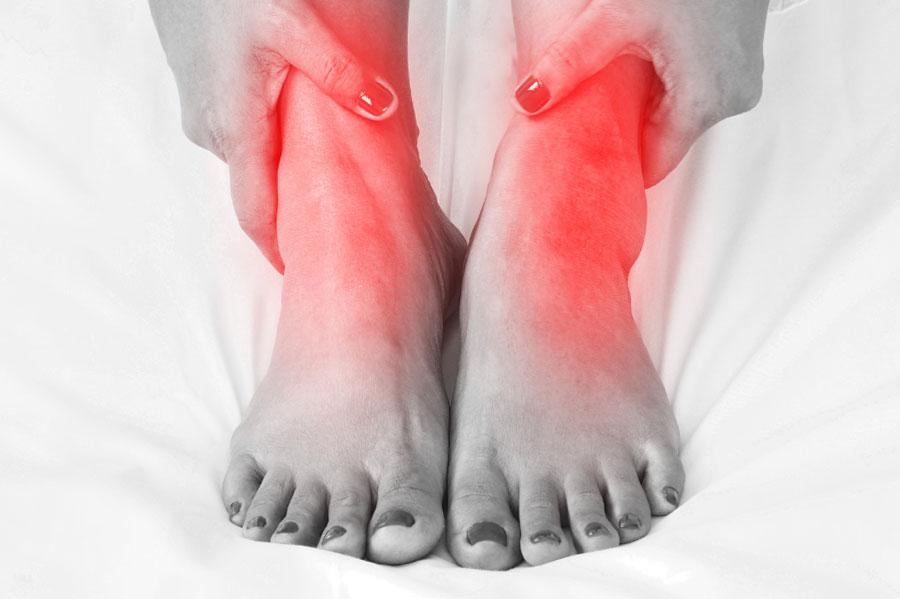
Many individuals often adopt a “wait and see” approach when confronted with foot pain, hoping the discomfort will miraculously disappear. However, procrastinating on addressing foot pain can lead to more severe issues in the long run. Let us delve into why delaying treatment for foot pain is a mistake and how timely intervention can spare you from prolonged suffering.
Understanding the Risks
The risks associated with postponing foot pain treatment are well-documented by reputable organizations such as the American Podiatric Medical Association (APMA). Ignoring foot pain may indicate underlying problems that can evolve into chronic conditions, impacting mobility and overall quality of life.
Impact on Daily Life
Foot pain can disrupt your daily activities, making simple tasks like walking or standing unbearable. The Cleveland Clinic emphasizes why it is important to not dismiss persistent pain, as it can significantly hinder one’s ability to engage in routine activities.
The Domino Effect
Foot pain often serves as a signal for biomechanical imbalances that can affect other parts of the body. Research published in the Journal of the American Podiatric Medical Association underscores the interconnectedness of foot health with issues in the knees, hips, and lower back.
It is crucial to address foot pain promptly to prevent the issue from worsening and potentially facing more extensive and costly treatments in the future. The adage “an ounce of prevention is worth a pound of cure” holds particularly true in the context of foot health. For a more in-depth understanding of the risks associated with delaying foot pain treatment and the significance of early intervention, refer to authoritative sources such as the Cleveland Clinic and the American Podiatric Medical Association.
Dr. Vrunda Dalal
Common Foot Problems and Their Solutions
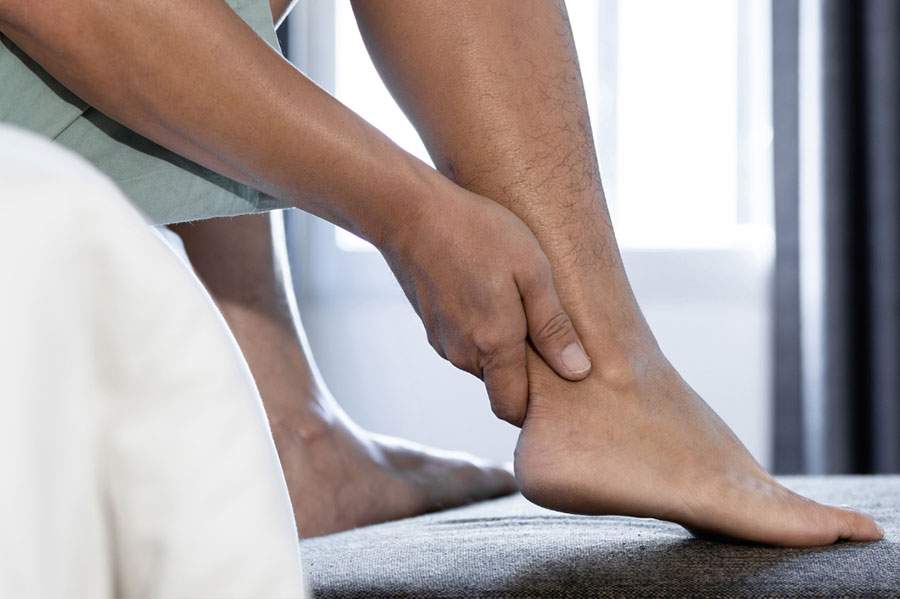
Every step we take puts our feet to the test, and it’s no wonder that common foot problems can arise over time. From the annoyance of bunions to the sharp pain of plantar fasciitis, these issues can impact our daily lives. Here at Sole Focus Foot and Ankle, with proper care and attention, we can help you manage these issues or prevent them.
Here’s a look at some common foot problems and practical solutions.
Bunions:
- Cause: Bunions, bony bumps at the base of the big toe, can be unsightly and painful. According to the American Academy of Orthopaedic Surgeons (AAOS), bunions often result from genetics or improper footwear. Wearing shoes with a wide-toe box and orthotic inserts can alleviate discomfort.
- Solution: Choose shoes with a wide toe box, use bunion pads or splints to alleviate pressure, and consider orthotic inserts for added support. In severe cases, consult a podiatrist for potential surgical options.
Plantar Fasciitis:
- Cause: Plantar fasciitis, a common cause of heel pain, occurs when the band of tissue supporting the arch becomes inflamed. Inflammation of the plantar fascia is often caused by overuse, improper footwear, or abnormal foot structure.
- Solution: Mayo Clinic recommends stretching exercises, wearing supportive shoes with proper arch support, and using orthotic inserts. We also recommend physical therapy and anti-inflammatory medications along with the above recommendations.
Ingrown Toenails:
- Cause: Ingrown toenails and nails that grow into the surrounding skin, often due to improper nail trimming or tight footwear, can make even the simplest tasks excruciating.
- Solution: The American College of Foot and Ankle Surgeons (ACFAS) suggests soaking the foot in warm water and avoiding tight shoes to prevent ingrown toenails. See us at Sole Focus Foot and Ankle for professional podiatry intervention in severe cases.
Corns and Calluses:
- Cause: Thickened areas of skin caused by friction or pressure, often from ill-fitting shoes.
- Solution: Regularly use a pumice stone to reduce thickened skin, moisturize to soften the area, and choose footwear with the proper fit. Please consult us for further care, as we can make custom orthotics for you to offload areas with increased pressure.
Flat Feet:
- Cause: Lack of arch support in the foot, which may be genetic or develop over time.
- Solution: Supportive shoes with arch support, custom orthotic inserts, and specific exercises to strengthen the arch muscles can help. Severe cases may require surgical intervention.
Achilles Tendonitis:
- Cause: Inflammation of the Achilles tendon, often due to overuse, improper footwear, or tight calf muscles.
- Solution: Rest, ice, compression, and elevation (RICE), along with stretching exercises and proper footwear, can aid in recovery. Please consult us at Sole Focus Foot and Ankle for further intervention.
By addressing these common foot problems early on, you can prevent them from escalating into more serious issues. Remember, your feet deserve the best care. By staying informed and taking preventive measures, you ensure that each step you take is a comfortable one.
Dr. Vrunda Dalal
Understanding the Importance of Strong Feet
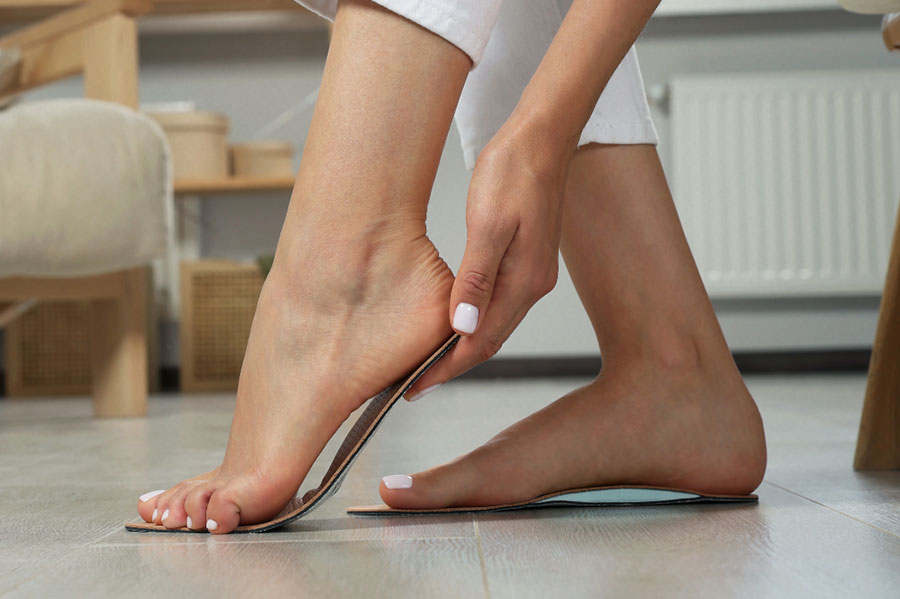
In matters pertaining to our health, understanding the significance of our feet is often underestimated, and their crucial role in maintaining overall well-being is frequently overlooked until the onset of unavoidable pain. Here at Sole Focus Foot and Ankle, we firmly assert that our feet serve as the fundamental support for the entire body.
It’s noteworthy that the human feet harbor a substantial anatomical complexity, comprising a quarter of the body’s bones, encompassing 33 joints, 26 bones, and over 100 ligaments. A nuanced understanding of the robustness and well-being of our feet form the cornerstone for adopting a holistic approach to overall health.
Delving into the profound significance of foot health, scientific studies, including those endorsed by authoritative bodies like the American Podiatric Medical Association (APMA) and insights from the Harvard Health Blog, underscore the potential repercussions of foot-related issues on other anatomical regions. An imbalance in the feet can adversely influence the ankles, knees, hips, and even the spinal column.
Taking a proactive stance toward foot health necessitates embracing preventive measures. Incorporating targeted stretching exercises, selecting appropriate footwear, and undergoing regular podiatric examinations all contribute to fostering enduring strength and resilience in the feet. This proactive approach not only serves to avert discomfort but also mitigates the likelihood of a domino effect impacting the rest of the body.
For deeper insights into the intricate realm of foot health, consider consulting authoritative sources such as the Mayo Clinic or the American Orthopaedic Foot & Ankle Society (AOFAS). These reputable resources offer comprehensive information, ensuring that you remain well-versed in the latest advancements in podiatric care.
Let’s take a moment to express gratitude for our feet and acknowledge their pivotal role in our daily lives. Prioritizing their health sets the stage for cultivating a more robust foundation that sustains the well-being of our entire body.
Dr. Vrunda Dalal
Conquering Chronic Foot Pain with Cutting-Edge Treatments
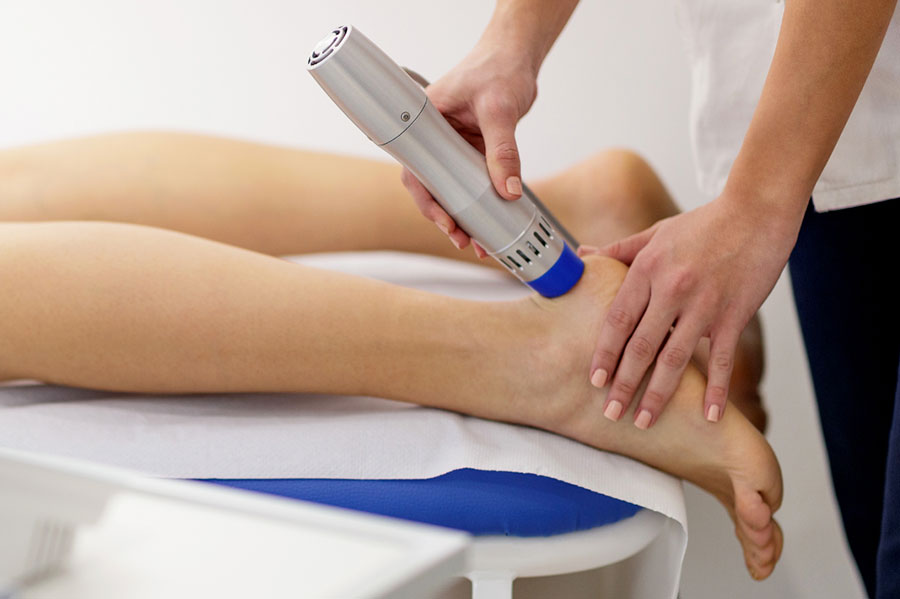
Podiatric pain can stop you in your tracks, turning everyday activities into arduous marathons. But before you resign yourself to limping through life, consider some of the powerful new treatment options available at Sole Focus, a practice dedicated to holistic, regenerative, and preventative medicine techniques.
We see many patients become frustrated with more traditional remedies when it comes to chronic foot and ankle pain, struggling with persistent discomfort and cures that only treat their symptoms rather than resolving the root cause. That’s why we’re devoting this blog post to a few of our favorite innovative methods for curing foot and ankle pain at the source. Onward to fitter feet!
Step Up Your Recovery with Extracorporeal Pulse Activation Technology (EPAT)
- EPAT uses low-frequency sound waves to stimulate tissue regeneration.
- It promotes a faster recovery from plantar fasciitis, tendonitis, and even stress fractures.
- This straightforward, non-invasive treatment often requires just a few sessions to alleviate chronic pain and get you back to your favorite activities.
- There’s no serious discomfort and no side effects, either.
Give Your Comfort a Boost with Leneva Fat Pad Injections
- Thinning fat pads in your feet can lead to painful bone-on-bone contact.
- Enter Leneva, a biocompatible gel injected into these areas to provide cushioning and support.
- Leneva makes use of allograft adipose tissue, which is basically donor fat tissue that has been purified for use in a medical context.
- This minimally invasive procedure offers long-lasting relief from chronic heel pain, especially for those who haven’t found success with traditional methods.
Target Your Pain Precisely with Ultrasound Guided Injections
- Accuracy is critical to tackling pain, so cookie-cutter, generalized methods often fall short.
- Ultrasound-guided injections deliver corticosteroids or other pain-relieving medications directly to the source of your discomfort, maximizing relief and minimizing side effects.
- Whether you’re suffering from bursitis or managing Morton’s neuroma, this targeted approach can bring sweet relief back to your soles.
Don’t let foot pain dictate your pace. If you’ve been struggling with chronic aches and feel fed up with typical treatments, schedule an appointment today, ask about the modern methods above, and take your first step into a pain-free future! Sole Focus Foot and Ankle in Marlton, NJ, would be delighted to provide you with the expert care that we’ve become known for.

